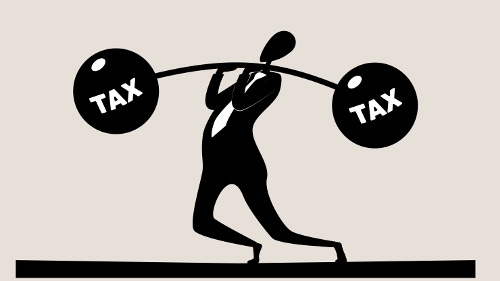An exploration of what is the true burden of the medical device tax, which is being scrutinized again by the Republican Congress.
January 9, 2015

Talk of medical device tax repeal is back in circulation.
What was a bitter pill in 2013 and 2014 that the industry had largely swallowed is now on the front burner given that Congress is now firmly under Republican control. A bipartisan bill in support of the repeal has been introduced in the House and some predict the 2.3% medical device tax can be repealed by March.
The question is how much overall damage has the device tax done? And what is the true tax burden? Numbers like $20 billion and $30 billion in taxes collected over a decade are getting thrown around a fair bit in media coverage, so it's a question worth asking.
Industry proponents and critics of the tax have loudly proclaimed that the tax is an innovation and job-killing machine and the fact that industry would outsource jobs overseas as a result.
"I haven’t been able to really find damaging statistics. And many trends such as moving plants or products overseas, seeking out Asian markets etc. were trends before and will be if the tax is repealed," said Bruce Carlson, publisher of Kalorama, a market research company focusing on medical markets, in an email. "There may be some slight venture capital grumbling about profits and less excitement about the industry as the result of the tax, as it is applied before profits, but it’s a hard thing to track...."
Let's tackle the job-killing charge of the device tax first.
The Evaluate Group's publishing arm EP Vantage published out a report in August that showed that employment levels have actually increased in the medtech industry. On average, the top 15 device makers expanded their workforce by 6% in 2013. Of the top 15 only three - Abbott Laboratories, Covidien, and Boston Scientific - showed a reduction in staff from 2012-2013.
And Abbott and Covidien showed lowered head count because they spun out their respective pharma businesses.
Even St. Jude Medical, which announced in 2012 that it would cut 6% of its workforce before the tax went into effect, increased its employment levels by 7% in 2013.
In November, the Congressional Research Office, published a report calling the device tax "challenging to justify" when viewed from purely a traditional economic and tax theory perspective. However, at the same time it described the effects of the tax as minimal.
"The estimates in this report suggest fairly minor effects, with output and employment in the industry falling by no more than two-tenths of 1%," the report said. "This limited effect is due to the small tax rate, the exemption of approximately half of output, and the relatively insensitive demand for health services."
That takes care of the employment effect of the tax, although industry lobbyists like AdvaMed disagree with such analysis.
Now to the tax burden.
The medtech industry has proclaimed that the device tax will collect $30 billion over 20 years, dramatically increasing tax liability. Others put the number at $20 billion.
The reality is that the answer is murky at this point. But what is true is that most of the numbers being bandied about are flawed and in some cases flatly wrong.
Carlson of Kalorama says that the $30 billion over 10 decades seems to have been arrived rather simplistically bysubtracting the exempt devices from the overall size of the domestic device market, taking 2.3% from that reduced amount and then subtracting the tax offsets that reduces overall liability.
"That's akin to $3 billion a year," he said, noting that this estimate is high given that more companies are doing business overseas.
He gave the example of Johnson & Johnson, which should have had a device tax liability of $294 million in 2013 but reported paying $200 million.
"I don’t suggest any wrong actions on the part of J&J but you can see that the tax with all the rules does not add up to full revenue. J&J among many things produces a number of consumer devices exempt from the tax. My point would be, any estimate based on the whole medical device market then applying the tax and then assuming generous growth rates. would be flawed," Carlson said.
Meanwhile, IRS is falling short of revenue collection goals. It had estimated it would collect $1.2 billion in the second and third quaters of $2013 but ended up collecting only $913.4 million.
But Carlson points out that IRS plans to step up enforcement and likely will collect more. How much more will reveal itself once the agency gets more adept at collecting this new tax.
Here is the truth: the device tax may not be good economic policy, but bandying about numbers like $30 billion is premature and describing it as job-kiiling is flat-out incorrect.
You May Also Like


